As snug and heartwarming as it is to see our furry friends wrapped in their soft, cuddly coats, this very attribute can sometimes be a magnet for unwanted guests—parasites. Our beloved dogs, with their charming looks and comforting warmth, are, unfortunately, prime targets for external parasites like fleas, ticks, and lice. These tiny invaders can make our dogs uncomfortable and even pose significant health risks. However, it’s important to remember that while the thought of these creatures may make us shudder, the presence of parasites is both preventable and treatable. With the right knowledge and preventive measures, we can ensure our pets remain healthy, happy, and parasite-free.
Fleas
What Do Fleas Look Like?
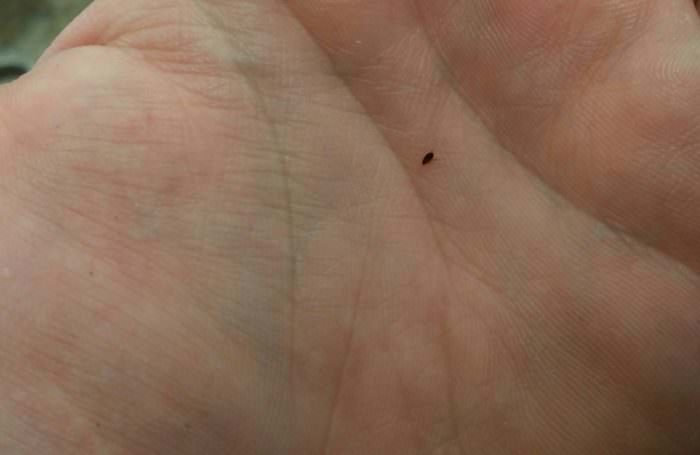
Fleas are reddish-brown and about the size of a pinhead. It’s difficult to spot these tiny insects unless you see them running or jumping on your dog. They are frequently found in the groin, armpits, and ears.
Fleas are more common during the warmer months or in warmer climates. However, since they can continue their life cycles indoors, it’s possible to spot fleas in the winter.
Related: Check Out Our Review of the Best Flea & Tick Treatments
How To Tell If Your Dog Has Fleas
If there is one thing fleas are good at, it’s making your dog itch. Constant scratching can cause visible patches of hair loss on your dog, as well as reddened and irritated skin. Fleas can cause skin allergies as well. In some cases, they can even transmit other parasites like tapeworms to your dog.
To tell if your dog has fleas, look for “flea dirt.” Flea dirt is the black flecks that fall from a flea-infested dog. Since fleas are sucking your dog’s blood, they’re also producing it in their waste. When those flecks get wet, they’ll turn red or rust-colored.
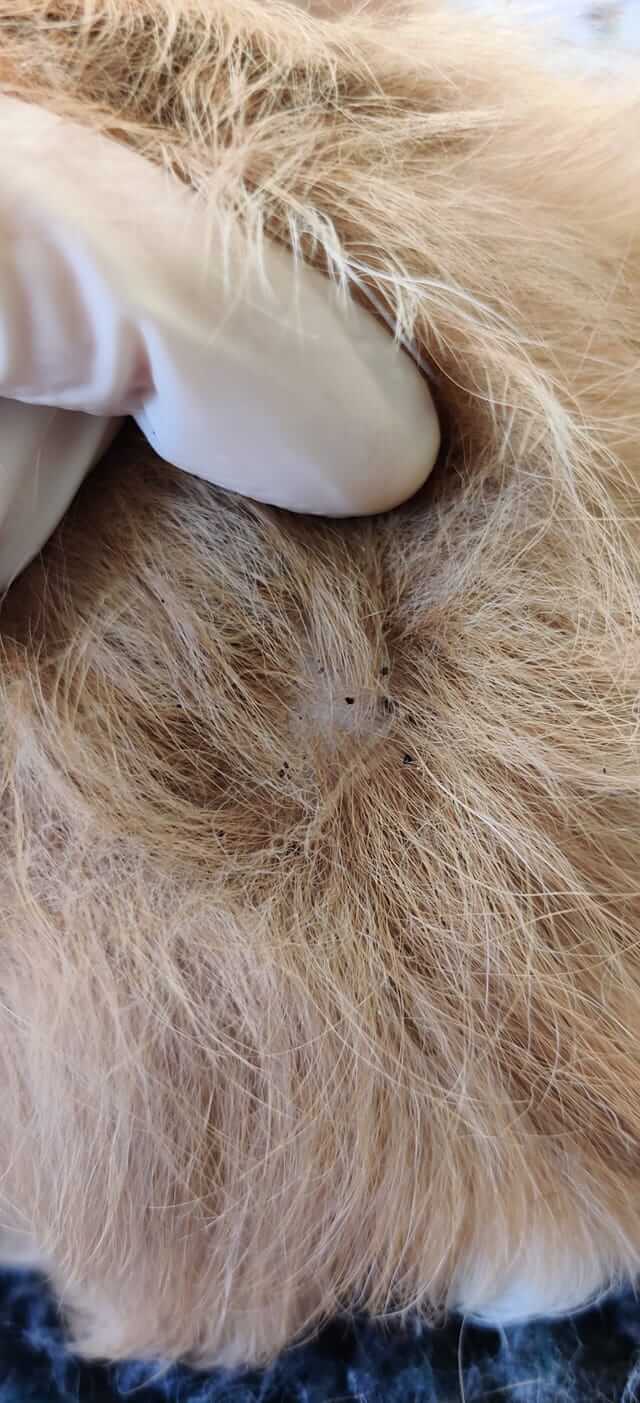
To find “flea dirt,” have your dog sit or lie on top of a white piece of paper. Then, briskly comb or rub a section of the hair on your dog’s back. If your dog does, in fact, have fleas, the flea dirt will fall onto the paper. Now, you just have to dampen the paper and observe any color change.
How Do You Treat Your Dog For Fleas?
When in doubt, you should always consult your veterinarian. They’ll be able to assess the situation and recommend safe and effective products. Treatments vary but include:
- Flea Collars
- Sprays
- Powders
- Topical Spot Treatments
- Ingestible Tablets And Liquids
Take care not to treat your dog near a cat if you have any. Dog flea treatments contain permethrin, which is toxic to cats. Make sure to keep your animals apart for a little while to avoid the risk of contact entirely.
Due to the nature of their life cycles, fleas can still hang around your home even if you treat your dog. This is because female fleas start laying eggs within the first 24 hours of choosing your dog as a host. They can lay about 50 eggs a day. Those eggs can then fall off your dog and onto the floor, furniture, or even outdoor areas where your dog lies. Non-adult fleas can remain dormant (or inactive) for weeks before they’re ready to infest an animal.
Vacuum your floors and clean the areas where your dog usually hangs out. Make sure to throw out the vacuum cleaner bag when you’re done too. That will help get rid of lingering flea eggs, larvae, and pupae. If your infestation is really severe, there are certain pet-safe insecticides you can treat your home or yard with. Consult your veterinarian if you aren’t sure what’s safe.
How Do You Prevent Your Dog From Getting Fleas?
Prevention methods for dogs range from pills to shampoos to topical spot treatments. It is strongly advised that you do not buy a product without clear knowledge of how it will affect your dog. Consult a veterinarian, who can recommend safe and effective preventive medications.
Ticks
What Do Ticks Look Like?
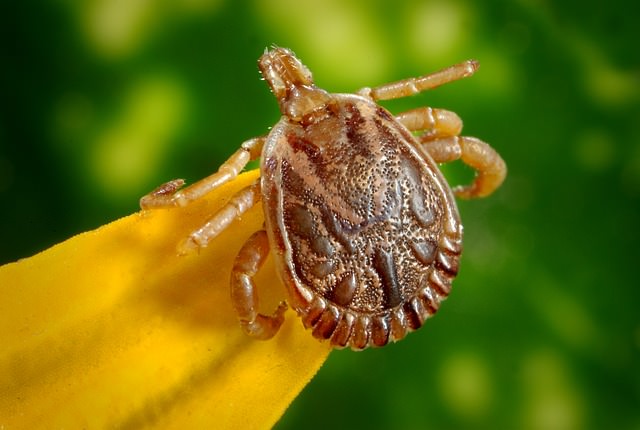
Ticks are small, but you can still see them with your naked eyes. After they’ve bitten a dog and feasted on its blood, they swell in size, so they’ll be especially easy to spot then. You can also typically feel them when running your hands across your dog.
Since they attach themselves to your dog’s skin, you’ll need to look underneath their hair. It may be easier to do when they are wet. Ticks are most often found around your dog’s neck, in the ears, in the folds between the legs and the body, and between the toes. But they can be found anywhere on your dog’s body, so check everywhere.
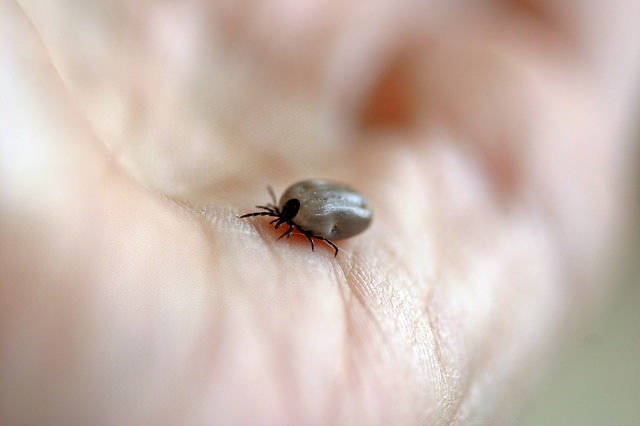
Ticks can stay attached for several days. Finding and removing the tick right away is important because the longer a tick is attached, the higher the likelihood your dog gets ill.
Risks And Consequences Of Tick Bites
Ticks may carry several dangerous diseases, so it is important to regularly check your dog thoroughly for ticks. Dr. Gary Brummet of the University of Illinois Veterinary Teaching Hospital says:
“Ticks are infamous for their disease-carrying capabilities. They transmit Lyme disease and Rocky Mountain spotted fever and can also pass along protozoa like Cytauxzoonosis and many others.”
Once a tick attaches, it takes 1-2 days for it to transmit the bacteria that cause Lyme disease. Prompt removal of a tick is absolutely vital! Often, signs of severe illness from tick bites may not show up for 7 to 21 days.
Symptoms of Lyme Disease in dogs include:
- Fever
- Loss of appetite
- Painful or swollen joints
- Lameness that comes and goes
- Swollen lymph nodes
- Lethargy
Lyme disease left untreated can lead to damage in the kidneys, nervous system, and heart. In addition to Lyme and Rocky Mountain Spotted Fever, ticks can cause paralysis. The risk of serious disease varies based on geography and the species of tick.
How To Remove Ticks And Treat Your Dog
When you find a tick, it’s crucial to remove the entire tick, including the jaws and head embedded in your dog’s skin. Crushing, twisting or jerking the tick out of the skin while its head is still buried could end up leaving the tick’s mouth parts in your dog’s skin. If the tick’s head is left behind, it can cause irritation or infection.
The best method for removing ticks is to grab their head with tweezers and pull slowly but firmly. After removing the tick, crush it, but make sure to avoid contact with tick fluids that can carry disease.
Put the tick in alcohol to kill it once it’s been removed, but not before then. Smothering the tick in alcohol or petroleum jelly or applying a hot match to it while it’s still attached might cause the tick to regurgitate saliva into the wound, which could increase the risk of disease.
How To Prevent Ticks
If you know you live in an area where ticks are known to reside (such as forests or areas with thick brush), daily tick checks are the safest bet. You can prevent infection or illness by catching and removing ticks as soon as they appear. If you go on a camping or hiking trip with your pup, you’ll definitely want to be on the lookout.
If your dog picks up a tick in your own yard, you can trim bushes and remove brush to prevent your pup from coming into contact again. In this particular case, you should also check yourself for ticks and wear long pants in these spots.
The most important step to take is giving your dog preventive medications and treatments. The American Veterinary Medial Association (AVMA) warns dog parents that parasite protection is not “one-size-fits-all.” Certain products are not meant to be used on very young or very old dogs. Some breeds can be sensitive to certain ingredients as well and could become ill from preventive products. Remember: when in doubt, always consult your veterinarian.
Lice
What Does Lice Look Like?
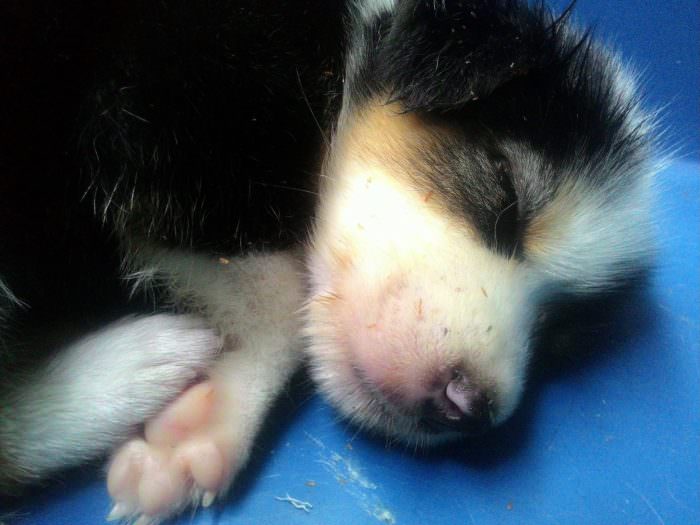
Lice can be the most difficult pests to spot since they are much smaller than ticks and less mobile than fleas. They’re flightless insects that live in hair and feed on skin cells and excretions from their hosts. Lice tend to look like dirt, debris, or small brown rice on your dog’s coat, but they won’t wash out.
When they’ve found a host, female lice glue their eggs, called “nits,” to hair shafts near the skin. Nits are oval-shaped and translucent. When they hatch, the lice undergo nymphal stages before reaching adulthood. Typically, lice will develop from nit to fully-grown adult in about 3 to 4 weeks.
How To Tell If Your Dog Has Lice
Excessive itching can be a sign that your dog is infested with fleas, ticks, or lice. Dry skin and allergies may also cause itching, so it doesn’t always indicate parasites, but it should cause you to take a closer look at your dog’s skin. They might have missing or matted patches of hair if infested with lice. A dog with lice will often have a rough, dry coat as well.
Animals that live in crowded or unsanitary conditions are much more likely to get lice. If you regularly attend to your dog’s coat and living areas, they’ll most likely avoid them. However, they might pick up lice at daycare or dog parks.
Risks And Consequences Of Lice
Because your pup will scratch and bite its skin frequently, it may cause some damage. Scratch wounds can become infected. Sucking lice can cause little wounds which can become infected. Some lice can also serve as hosts for intestinal tapeworms.
Severe infestations, especially in puppies, can lead to anemia. Within a few months, a dog could lose about 1/4th of its blood to lice, which could even put them into shock.
One silver lining is that lice are usually species-specific, so it’s not likely they’ll be transferred to you from your dog.
How To Treat A Lice Infestation In Dogs
First things first, consult your veterinarian. They’ll have the best knowledge of effective and safe products for your dog. Unfortunately, regular washing and shampooing will not dislodge lice nits. Lice that fall from their host will die within a few days. However, eggs can continue to hatch over 2 to 3 weeks. Your veterinarian can help you find lice-specific shampoos and treatments.
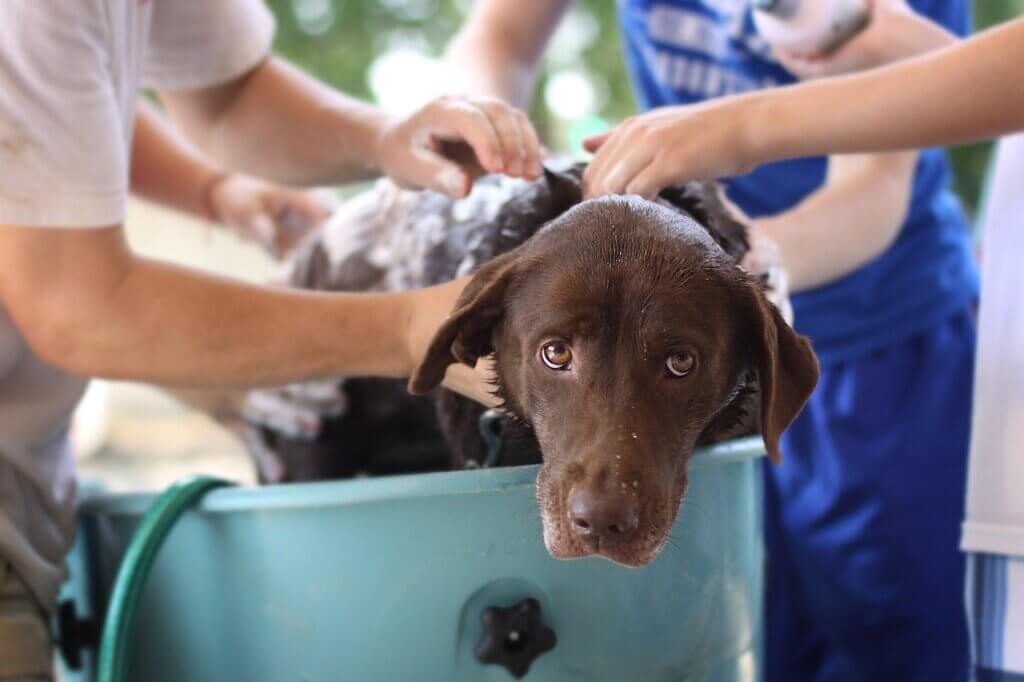
Dogs and cats are usually treated for lice with spot-on products, lice shampoos, collars, sprays, or dust. Treatment will probably have to be continued for a little while to ensure that the adult lice and the larvae and eggs have all been killed. Typically, lice control treatments should be repeated 7 to 10 days after the first treatment. You should also continue to inspect your dog’s coat daily for at least 2 weeks after you see the last louse.
If treatment goes on for more than a week and the lice are still there, your veterinarian may suggest environmental control. Clean every brush, kennel, and piece of bedding your dog uses thoroughly with hot water. Bag up fluffy toys to isolate them. You should also take extra care to seal and dispose of any dead or live lice removed from your dog.
Preventing Lice In Dogs
There are a variety of lice prevention treatments for dogs out there. In addition to consistent treatment, don’t let any other dogs make contact with a lice-infested dog. That’s what spreads the lice.
If you consistently clean your dog’s space and possessions, they’ll be less at risk.
FAQs About Fleas, Ticks, and Lice
Uninvited canine carpoolers of the parasitic kind, such as lice and fleas on dogs, are sure to make your pup miserable. As dog owners, we want answers to all the important questions, such as: “Can dogs get head lice?” “What is the best flea medicine for dogs?” “How to get rid of fleas on dogs?” Can dogs get lice from humans?” And other questions about how to care for our dogs during an infestation.
Keep reading to learn about lice and fleas on dogs and how you can keep them at bay.
1. How do I know if my dog has fleas?
Spotting fleas on dogs, especially in the early stages of an infestation, may not be easy. Fleas are visible to the naked eye but can be difficult to see through your dog’s fur. Excessive scratching is often one of the very first signs of a flea problem.
It is important to note that itchy skin can be a symptom of other issues as well, such as food or contact allergies. Sometimes, when a dog is eating a less-than-favorable diet or lacking nutritionally dense foods, itchy skin can be present. An easy way to boost the nutrients your dog consumes is with all-natural dog food toppers. Shop the best all-natural dog food toppers at iHeartDogs and feed 7 meals to shelter dogs with every purchase. Dog food toppers not only boost nutrients, but they can wet your dog’s appetite, too – as if they weren’t excited enough to eat.
2. How do I know if my dog has lice?
What? Can dogs get lice?! The answer is yes.
Spotting lice on your dog may even be more difficult than spotting fleas. Adult lice are only about 2 mm big, which is smaller than the tip of a sharp pencil. Nits, or lice eggs, are even smaller and might look like sand in your dog’s fur.
Signs your dog has lice will likely be similar to signs of a flea infestation. Excessive scratching is a common first sign of dog lice. Other symptoms may include hair loss, rough or tangled coat, tiny scattered wounds, and, in extreme cases, anemia. While any infestation will certainly be unpleasant for your dog, you can try to make them more comfortable with the best calming supplements for dogs while their flea or lice problem is treated. Many of these supplements are great anytime for particularly anxious, senior, or sensitive dogs.
3. How do I tell the difference between dog lice and dog fleas?
The best way to tell the difference between lice and fleas on dogs is to watch the movement of the parasite. Fleas tend to move quickly, and you may even see them jump. Fleas leave behind excrement that looks like black dirt that may be easily spotted or even felt as you pet your dog.
Lice moves more slowly than fleas and may appear completely stationary. While lice leave behind no visible excrement, you may see what looks like beach sand throughout the base of your dog’s fur. This “sand” is actually their eggs. Flea eggs, on the other hand, tend to fall from their canine host’s fur and end up scattered around your home.
4. What kills fleas instantly on a dog?
For the best advice on how to get rid of fleas on dogs should come from your veterinarian. Flea treatment for dogs can come as a topical medication, an oral medication, or a flea shampoo. There are also more natural alternatives, such as diatomaceous earth, apple cider vinegar, and baking soda. The strongest flea medicine for dogs is offered by prescription from a veterinarian.
5. What kills lice on dogs instantly?
Killing lice and fleas can be challenging – as you may need to rid more than just your dog of the lice. For the best recommendations, consult your veterinarian. Prioritize your dog’s safety, no matter how badly you want to kill lice instantly. Oral and topical lice treatments are available by both prescription and over-the-counter. Prescription or over-the-counter treatments may take some time to eliminate the lice.
6. What does a lice infestation look like on a dog?
It is not uncommon for a lice problem to go unnoticed until it becomes a full-blown infestation. It can be difficult to spot lice with the naked eye, and it usually takes a careful inspection to confirm their presence. Lice tends to cling to areas such as the neck, groin, ears, and underneath of a dog’s legs. Check these areas first if you suspect an infestation.
7. Can dog lice infest your home?
It is very unlikely for dog lice to infest your home. Dog lice rely on “fur to fur” contact to spread between dogs and cannot easily survive without their canine hosts. While the chances of dog lice roaming your home is slim, it is still a good idea to wash all dog bedding, as well as their favorite spot on the couch or other contact areas, if your dog has lice.
8. Can dog fleas infest your home?
Unlike lice, fleas are happy to live just about anywhere. Fleas can easily live in carpets, upholstery, bedding, and cracks in the floors or walls. Fleas live off of blood in general, including from humans and other animals. Vacuuming frequently is a great first line of defense when it comes to fleas in your home. Be sure to empty your vacuum canister or bag quickly after vacuuming.
9. Where do lice on dogs go?
Since lice cannot survive without their canine host, they remain on a dog for their entire life cycle. Aside from the aforementioned areas, such as groin, ears, and legs, lice also love to burrow underneath collars. This can be especially uncomfortable for your pup. The best dog collars to wear during a battle with these parasites will be snug but not so tight that your pup can’t scratch around it.
10. How do I avoid dog lice?
The best way to avoid dog lice is to keep up with grooming and vet checks. These opportunities allow for early detection of a life issue, which can make treatment much easier. It is also a good idea to quarantine any new additions to your pack to ensure there are no parasites to spread.
11. How do I avoid dog fleas?
Avoiding dog fleas may be more difficult, as they are more common than dog lice. Fortunately, flea prevention is available. Speak with your veterinarian about the best prevention options for your dog(s).
12. Can humans get lice from dogs?
Dog lice and human lice are different and one cannot survive on its counterparts’ host. Dog lice can, however, transfer from dog to dog fairly easily.
Tiny invaders such as lice and fleas on dogs can make a happy pup irritable and uncomfortable. As dog parents, it’s our duty to remain vigilant and protect our dogs from prolonged infestations. Prevention is key, and early detection can make treatment easier and more effective.
At iHeartDogs, we believe every dog matters – and that’s what drives us. Shop our best-selling products for dogs and give back to dogs in need while doing so. Just like humans, some dogs are less fortunate than others, but there’s always the chance for a new opportunity that can change their life. Until then, shelters and dog-loving volunteers step up to care for these dogs. With every purchase at iHeartDogs, you can give back to shelter dogs in need.
External Parasites: A Summary
- If you find sufficient evidence that your dog has an infestation, consult your veterinarian for a safe and effective course of treatment.
- Use preventive medications consistently to keep your dog safe.
- If you live in areas of risk, perform daily tick checks on your dog.
- Wash your dogs’ bedding and sleeping areas frequently.
Keeping Our Furry Friends Safe and Parasite-Free
In the fight against fleas, ticks, and lice, every dog parent’s toolkit should be equipped with knowledge, vigilance, and effective preventive measures. Understanding the risks and knowing how to combat these parasites are crucial steps in ensuring the well-being of our furry family members. At iHeartDogs, we stand committed to providing you with the resources you need to protect your pets and help you make informed decisions about their health. Remember, by choosing products that support animal welfare, you’re not only caring for your pet but also contributing to a broader mission of helping less fortunate dogs. Together, we can aim for a world where happy homes, healthy dogs, and empty shelters are a reality. So, let’s continue to protect our dogs with love and vigilance, keeping them safe from these pesky parasites.

 Toledo, United States.
Toledo, United States.